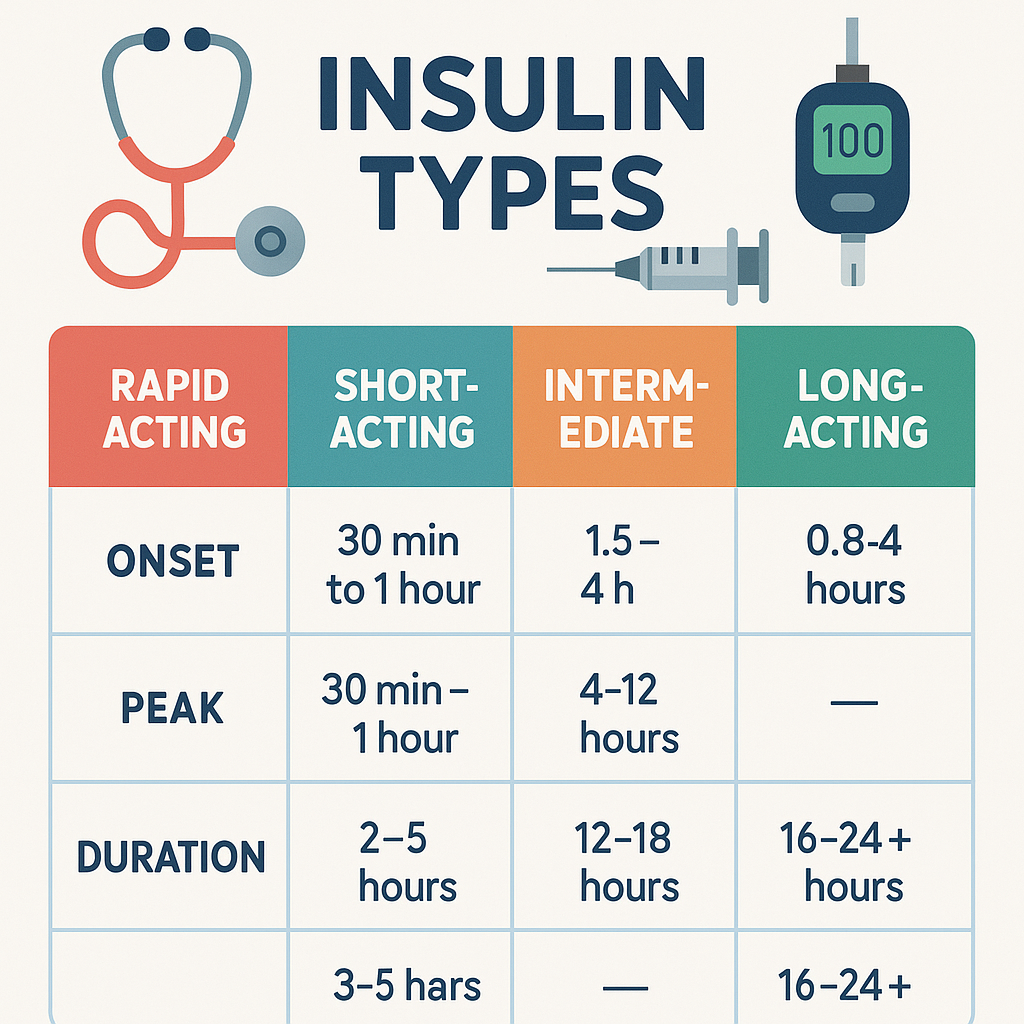When it comes to NCLEX preparation and real-world nursing practice, one of the most high-yield pharmacology topics is insulin types and their peaks. Every nurse, whether you’re a student, graduate, or registered nurse (RN nurse), must know the differences between rapid-acting, short-acting, intermediate-acting, and long-acting insulin. These medications are critical for safe diabetes management, and mistakes can be life-threatening.
This guide breaks insulin down in a simple chart with clear nursing tips, common side effects, and high-priority NCLEX notes to help you succeed in exams and practice.
Why Insulin Knowledge Matters for Nurses
- NCLEX exam alert: Insulin timing questions frequently appear on NCLEX. You’ll be asked to match insulin types to their onset, peak, and duration.
- Patient safety: Misunderstanding insulin peaks can cause hypoglycemia, one of the most dangerous complications for patients with diabetes.
- Clinical confidence: A solid understanding of insulin builds trust between patients and the healthcare team.
Whether you’re studying from a nursing bundle or reviewing for your shift, mastering insulin is a must.
🩺 Insulin Types & Peaks Chart
| Insulin Type | Examples | Onset | Peak | Duration | NCLEX Nursing Tips |
|---|---|---|---|---|---|
| Rapid-Acting | Lispro, Aspart, Glulisine | 10–30 min | 30–90 min | 3–5 hrs | Give right before meals; monitor for hypoglycemia during peak. |
| Short-Acting | Regular insulin (Humulin R, Novolin R) | 30–60 min | 2–4 hrs | 5–8 hrs | Only insulin that can be given IV; watch for hypoglycemia mid-meal. |
| Intermediate-Acting | NPH | 1–2 hrs | 4–12 hrs | 14–24 hrs | Cloudy appearance; roll vial to mix; give with food to avoid lows. |
| Long-Acting | Glargine, Detemir | 1–2 hrs | No peak (steady) | 20–24 hrs | Provides basal insulin; never mix with other insulins. |
| Ultra-Long-Acting | Degludec | 30–90 min | No peak (steady) | 24–42 hrs | Great for once-daily dosing; safe basal control. |
Key NCLEX & Nursing Tips
- Remember: “Peak = Risk for hypoglycemia.” Always plan snacks and monitor blood sugar closely at peak times.
- Mixing insulin: Clear (Regular) before cloudy (NPH). Think: “RN – Regular before NPH.”
- IV use: Only Regular insulin is safe for IV administration.
- Long-acting insulins (Glargine, Detemir, Degludec): No pronounced peak → lower risk of sudden hypoglycemia.
Common Side Effects Nurses Must Know
- Hypoglycemia (most dangerous) – sweating, tremors, confusion, dizziness, irritability.
- Lipodystrophy – avoid by rotating injection sites.
- Weight gain – common with insulin therapy.
As an RN nurse, your role is to educate patients on timing meals, recognizing early hypoglycemia signs, and rotating injection sites for best outcomes.
Final Thoughts
For the NCLEX, insulin questions often test your ability to identify when a patient is most at risk for hypoglycemia. In practice, safe insulin administration can save lives.
This quick chart is a must-have for every nursing bundle and is essential knowledge for registered nurses in all practice settings.
If you’re a nurse preparing for exams or practice, keep this chart handy—you’ll use it far more often than you think.

